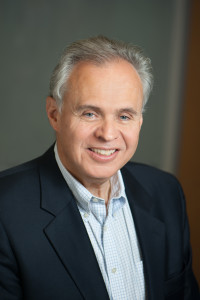Psychotherapy Leaders: Dr. Molyn Leszcz on Group Therapy, Part 1 of 2

Dr. Leszcz is a world-renowned expert in group psychotherapy and an extraordinary leader in Canadian psychiatry. He is a Distinguished Fellow of the American Group psychotherapy Association among other prestigious recognitions. Amongst his many publications, Dr. Molyn Leszcz co-authored with Dr. Irvin Yalom the revised and updated 5th edition of The Theory and Practice of Group Psychotherapy (Basic Books), the incomparable guide to group therapy. In March of this year, Dr. Leszcz and his colleagues: Drs. Clare Pain, Jon Hunter, Robert Maunder and Paula Ravitz (also editor with Robert Maunder) published the book Achieving Psychotherapy Effectiveness in the “Psychotherapy Essentials To Go” series (W. W. Norton & Company).
We are extremely grateful to Dr. Leszcz for taking the time to talk to us about group psychotherapy for this series.
PsychotherapyMatters.com (PM):
Tell us about yourself.
Dr. Molyn Leszcz (ML):
I’m Professor and the Clinical Vice-Chair in the Department of Psychiatry at the University of Toronto, and Psychiatrist-in-Chief at Mount Sinai Hospital. My academic focus has largely been in the area of group psychotherapy, the application of group psychotherapy, the training of effective group psychotherapists. I also do research into the different models of group psychotherapy for different medical populations. I lead psychotherapy groups and supervise other leaders of psychotherapy groups in an ongoing way. In a typical week, I am responsible for three to four psychotherapy groups that I am leading or supervising.
PM:
How did you first become interested in group psychotherapy?
ML:
I was interested in group psychotherapy as part of a range of things we can do in psychotherapy. When I was finishing my residency at the University of Toronto, I had the remarkable opportunity to go to Stanford California and work for a year as a fellow with Dr. Irvin Yalom. At that point in time, Dr. Yalom had already published the First and Second Editions of The Theory and Practice of Group Therapy, a book that I had read during my residency. I had the fortune of being supported by the Province of Ontario’s McLaughlin Foundation Fellowship to go to Stanford. Dr. Irvin Yalom had trained as a resident under Dr. Stanley Greben, who was then Psychiatrist-in-Chief at Mount Sinai Hospital in Toronto. So it was easy to coordinate.
PM:
What was the nature of your collaboration with Dr. Irvin Yalom?
ML:
I worked very closely with Dr. Irvin Yalom for a year leading groups together and doing research on group therapy on the inpatient setting. That began a long and productive collaboration of writing together and publishing in 2005, the 5th Edition of The Theory and Practice of Group Therapy. It was a great honour and privilege that Dr. Yalom asked me to co-write this book with him. This book is a very well regarded text book on group therapy and has been translated into more than a dozen languages around the world, including Mandarin. Part of this collaboration is outreach with the Yalom Institute at the China Institute of Psychotherapy in Beijing, where I do training in group psychotherapy.
PM:
What was it about group psychotherapy, specifically, in contrast to individual psychotherapy that piqued your interest?
ML:
I think of the value of belonging, the value of having the sense of community, the value of being part of something bigger than just one person. Group psychotherapy, when it is well done, elevates people. Group psychotherapy draws the best out of people with regards to their humanity and their ability to be helpful and therapeutic to one another. For me, I’ve also been someone also interested in team sport. I’ve coached hockey and I’ve coached baseball. I’ve always enjoyed the creation of a strong team with good leadership and sense of cohesion. Groups are best when there is a strong sense of belonging and a strong sense of evidence of effectiveness with regards to the tasks of the group.
Over the years I have found that my group therapy training has helped me very much in administrative positions both at the university and in the hospital. In positions of leadership, I have found the training has helped me to understand how larger groups, departments, organizations, hospitals can be understood in group psychological terms. This is something that became very important as our hospital underwent some serious external strains and threats. A number of years ago, it was SARS, and then it was the H1N1 endemic. We have been able to use some of the understanding of what makes groups strong and resilient to provide training and interventions that have strengthened our hospital, strengthened our resilience, and have contributed to Mount Sinai Hospital receiving Canada’s 10 Most Admired Public Corporate Cultures Award for the past two years. So there is both clinical relevance and there is also administrative and organizational relevance.
PM:
That’s wonderful! As a clinical leader, teaching, training, supervising learners in group psychotherapy, what clinical pearls do you pass on to your students learning to provide group psychotherapy?
ML:
I would emphasize the importance of cohesion, and the importance of having clarity about the goals and tasks of the group. Trainees need to learn how to create strong and cohesive groups with a clear common purpose. Different clinical groups will have different objectives, different formats, and different structures. Running a group on an inpatient unit, where composition of the group changes each day, and is made up of very acutely ill patients, is very different from a group for women with genetic predisposition to develop breast cancer. Here we are using the group as a way to help the women with understanding of risk, cope with anxiety and make reasonable decisions in their lives.
These are the two key ingredients in being an effective group leader. The first is developing strongly cohesive groups; there is a range of depth and interventions that we can employ that contribute to cohesion in groups. The second key ingredient is employing empathy in a rigorous way; empathy with regard to our understanding of the inner world, of the experience, concerns, interpersonal behaviours, and cognitions of our patients. Providing feedback and attributing meaning to experience also needs to be empathic. So empathy involves both a receptive component—the understanding component, and an expressive component—how we communicate or convey empathy. Those are the two hallmarks of being an effective group psychotherapist. There are many steps that contribute to the development of each of those.
The third key area, that is gaining more and more prominence with regard to effectiveness and enhancing effectiveness, is being able to measure what you are doing in your groups. This means paying attention, on a regular basis, to getting outcome data from the members of your group. You also need to gather process data to help you understand the level of cohesion, of engagement, of trust, and of empathy. In training group psychotherapists, we use that data to provide early feedback to the group therapy provider, to reinforce things that are going well, and to help realign when a problem may be beginning to bubble up.
PM:
You have explained very succinctly and clearly what a group psychotherapist “must do,” I understand that in your book with Dr. Irvin Yalom, what a group psychotherapist “must be” is also emphasized. Can you elaborate a little bit more on this?
ML:
Well I think that the research is pretty clear. The elements or ingredients that contribute to being an effective group psychotherapist involve certain attributes that I think are part of some people’s nature. For others, they have to acquire those attributes through the course of training. In order to be effective as a group psychotherapist, one needs to have a strong sense of personal integration and integrity. We need to be well grounded. We need to be able to be well balanced so that we don’t get rocked emotionally. We need to be able to manage anxiety so that we are able to maintain reflective capacity and not fly into a reactive mode.
Reflection is critically important for us to be able to recognize counter-transference and to understand the source of the counter-transference. What is generated, in a more objective way, because of what the patient brings into the situation? What is generated by us, subjectively, by virtue of what we typically bring into the clinical setting? There is good evidence that our capacity to use counter-transference, and not be swept along with it, is a good predictor of better clinical outcome. I think we all know, in our community, therapists, to whom we would prefer to refer our family members or friends. These therapists share the elements that we have just been talking about. They are empathic, they are good communicators, they make strong attachments to patients. They care! Dr. Irvin Yalom always used to write that therapy is a “loving profession.” “You gotta love people; you gotta love the work, in order to be effective at it.”
Furthermore, you have to be able to manage the professionalism required. Psychotherapy is a fiduciary relationship. We have to be very alert to issues surrounding boundaries. We have to make sure that everything that we do, is done in the interest of our patients. We have to make sure we use ourselves as a therapeutic agent, in a transparent, judicious, disciplined manner, especially in giving feedback to patients. We need to be very self-aware about what our motivation is, when we give feedback or when we make an intervention. We have to be able to reflect on: Why we are we doing this? What is our hope or purpose? What are the ways that this could get misaligned? How can we repair it? The therapist needs to protect the boundary around the patient so that our self-esteem needs do not ever overshadow the patient’s needs.
PM:
How does this become an issue?
ML:
Sometimes patients criticize us and we have to be able to look at things from their point of view. If the faults they are finding are legitimate, then we need to ask: How can we learn from it? How can we repair it or fix it? How do we process it?
A big part of our effectiveness as a group leader—or as any kind of psychotherapist—is being able to process what’s happening in the group or between us and our patients. We can do this in ways that are open, fair, and equitable, without power, without blame, without shame. We can also inadvertently become faulting, blaming, and shaming of our patients. Once we do that, therapy is generally going to end, come off the rails, and we can be potentially injurious.
Between 10 and 20% of the time, patients do not do better in psychotherapy, but actually may be worse as a result of psychotherapy. The evidence shows us that there are some psychotherapists who are particularly effective, and there are psychotherapists who may be particularly ineffective. What we need to do, as a profession, is to hold ourselves accountable to provide good, solid work, and that we provide training, supervision and consultation so that people don’t repeat mistakes over and over again. Making errors is part of being human. Our patients don’t expect us to be perfect. But what they do expect is that we will learn from our mistakes and try to improve on things as we move forward.
(To be continued in Part 2…)
